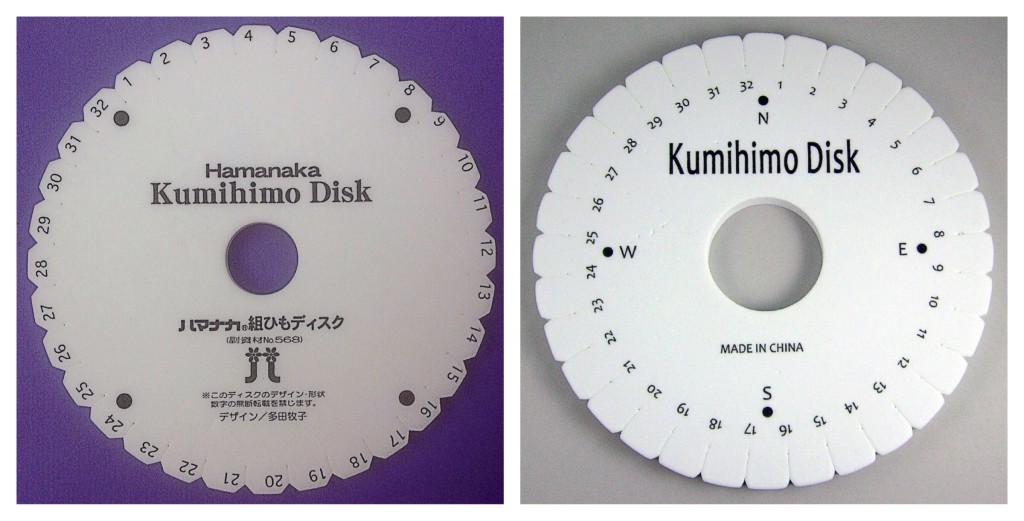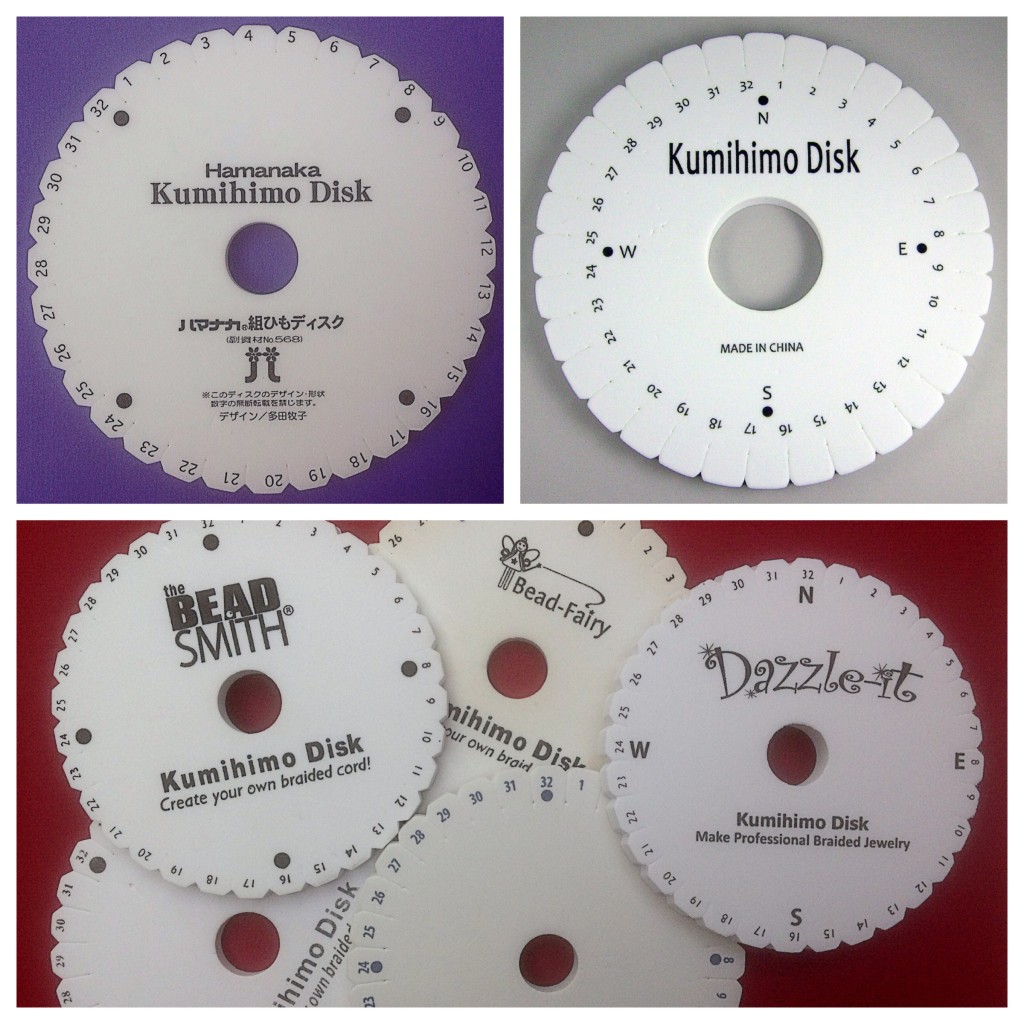On the top left is the original kumihimo disk, designed by Makiko Tada and manufactured by Hamanaka. On the top right is a disk available from a US website. They look pretty similar, but what is the significant difference?
In the original design the numbers are located in between the slots. My guess is that this was done so that the numbers do not get worn away when the disk is used. While this makes good sense, it has led to some confusion at times. The number refers to the slot to the left, when the numbers are viewed the correct way up. Put another way, working in a clockwise direction the number comes after the slot. Put yet another way, the number is to the right of the slot. It is confusing, isn’t it?! I have written that several times and I am still not sure if I have got it totally right! Some people have found it so confusing that they have introduced their own system, such as referring to the slots on either side of the number 32 as ’32L and 32R’, which makes the overall picture even more of a muddle!
In spite of this confusion, almost all disks follow the original positioning for the numbers, as can be seen in the bottom image. However, the disk on the top right shows the numbers right under the slots. In many ways, this makes good sense, but it has not been very helpful to me. I have done a lot of work on an alternative round braid structure, which I find to be particularly versatile and attractive. It is a little more complex than the standard Round Braid and it is easy to lose your way, so I devised a way of marking up the disk to make the structure much easier to learn and minimise mistakes. The new instructions feature in my latest tutorials and I have been getting some great feedback about the method. It has all been so good until yesterday, when Debbie Altman very kindly contacted me and sent me a photo of the disk on the right and pointed out that the way I have explained how a disk should be marked does not work with this particular disk! I am very grateful to have found out about this and been able to produce alternative instructions, which I will email out on request. It also means that I will keep an eye on disk developments and be ready to act if necessary.
A big thanks to Debbie!


